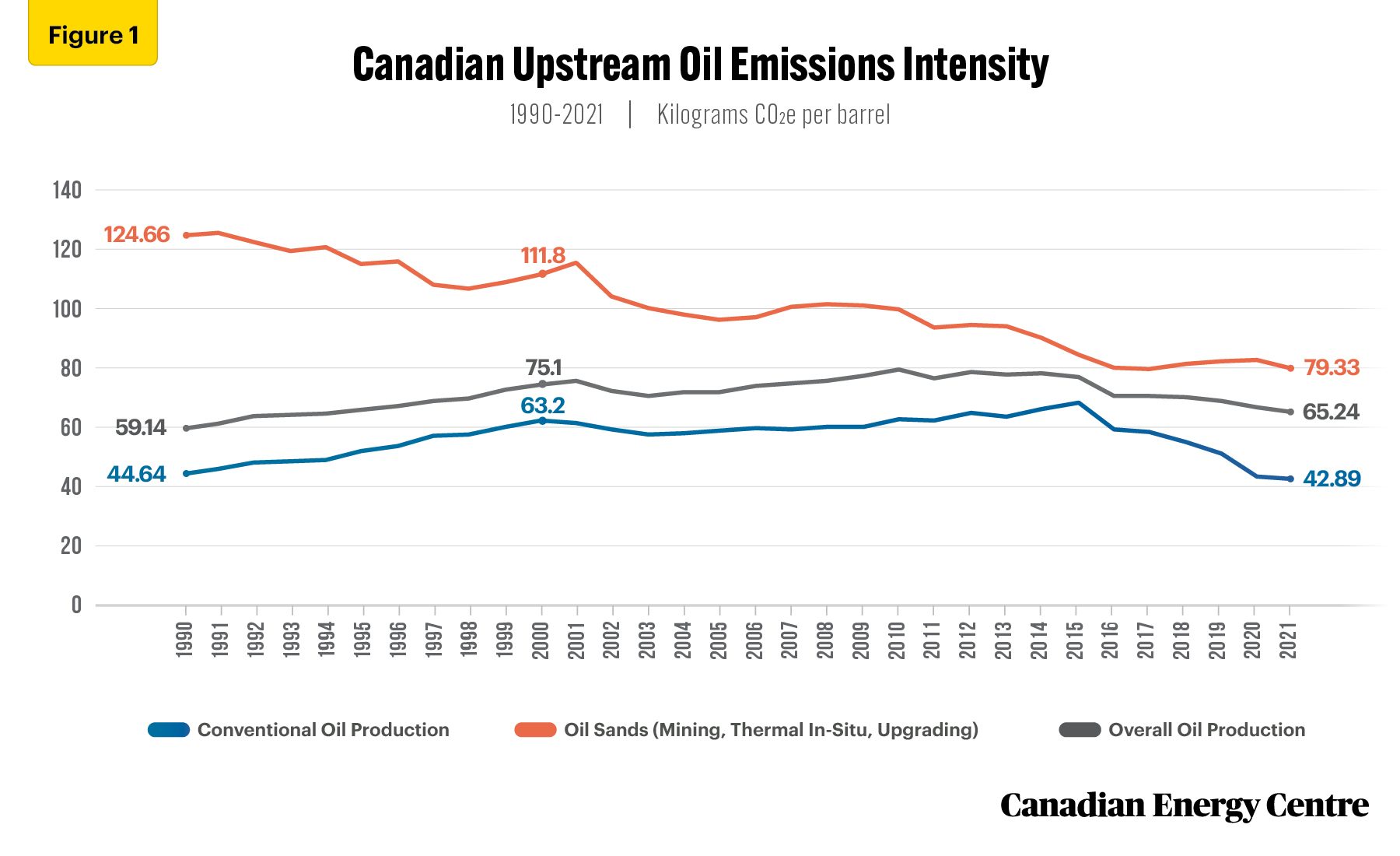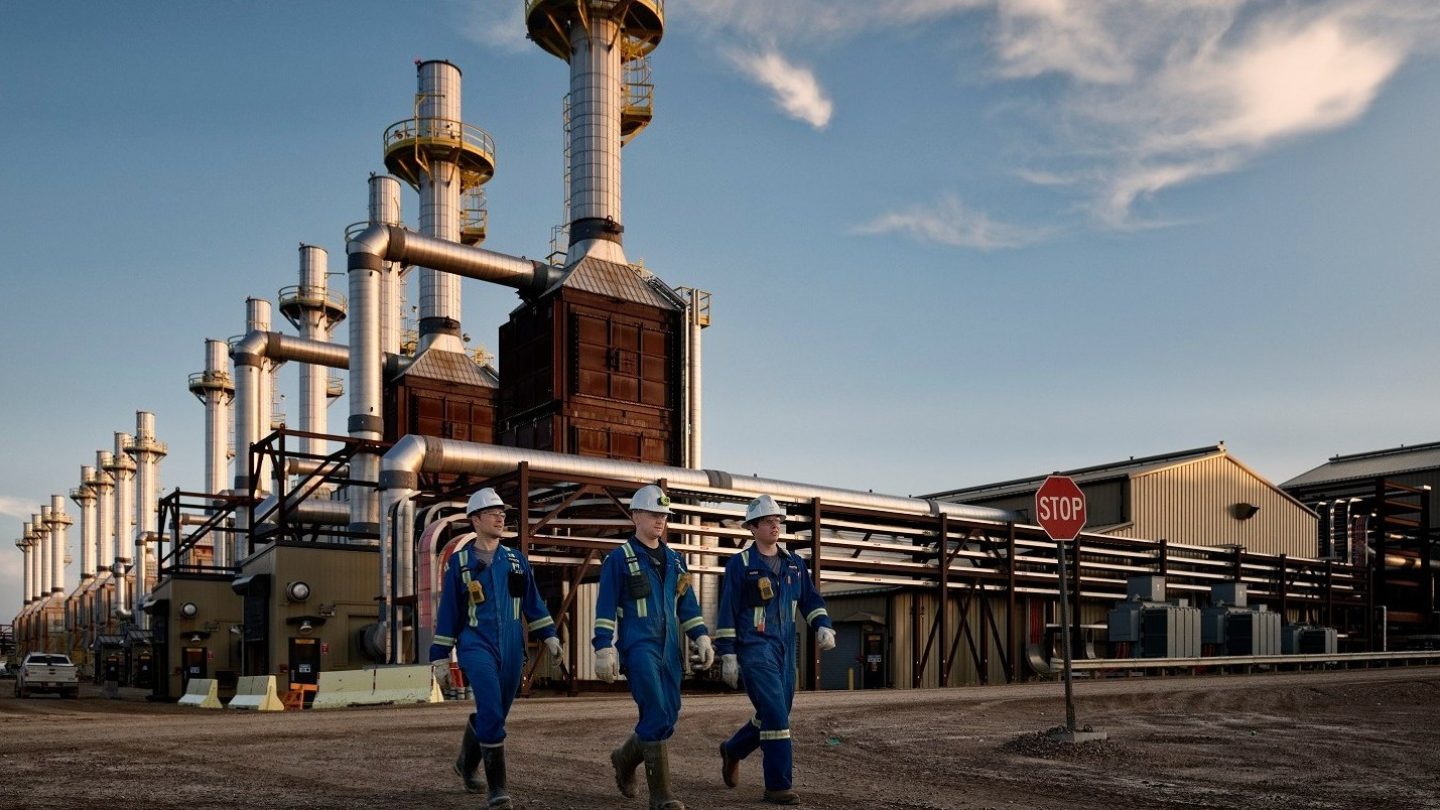To sign up to receive the latest Canadian Energy Centre research to your inbox email: research@canadianenergycentre.ca
Download the PDF here
Download the charts here
Introduction
People are interested in the question of whether a barrel of oil produced by the Canadian upstream oil sector is becoming cleaner on an emissions per barrel basis.
To answer this important question, this CEC Fact Sheet examines historical emissions intensity numbers, expressed on a kilograms CO2 equivalent (CO2e) per barrel basis, from Environment and Climate Change Canada (ECCC). We look at Canadian upstream oil sector (defined as the sum of the oil sands subsector and the conventional oil subsector) over time.
Tracking the historical emissions intensity of Canada’s upstream oil sector
Emissions intensity is the emission rate of a given pollutant relative to the intensity of a specific activity or industrial production process. Emissions intensity is determined by dividing the amount of absolute emissions by some unit of output, such as GDP, energy used, population, or barrel of oil produced.
Reducing emissions intensity means reducing the amount of greenhouses gases (GHGs) emitted per unit of output. The aim in focusing on emissions intensity is to retain a meaningful target regardless of shifts across a company’s portfolio.
Overall Canadian oil emissions intensity per barrel down by over 13% since 2000
Using ECCC numbers, drawn from the 2023 National Inventory Report (NIR), between 2000 and 2021, the emissions intensity of the Canadian upstream oil sector fell from 75.1 kilograms CO2e per barrel to 65.2 kilograms CO2e per barrel, an overall reduction of over 13 per cent (see Figure 1).
Blending the oil sands subsector and the conventional oil subsector into a total emission intensity for the Canadian upstream oil sector masks some important trends for the two subsectors.
Oil sands emissions intensity down by over 29% since 2000
Oil sands subsector emissions intensity fell from 125.7 kilograms CO2e per barrel in 1991 to 79.3 kilograms CO2e per barrel in 2021, a decline of nearly 37 per cent.
And, between 2000 and 2021, the emissions intensity of the oil sands subsector fell from 111.8 kilograms CO2e per barrel in 2000 to just under 79.3 kilograms CO2e per barrel in 2021, a decline of over 29 per cent (see Figure 1)

Source: Derived from Government of Canada, 2023(a) and Government of Canada, 2023(b)
Notes: Intensities are based on total subsector emissions and relevant production amounts. They represent overall averages, not facility intensities.
Conventional oil emissions intensity down by over 32% since 2000
Since 2000, the emissions intensity in the conventional oil sector has fallen from 63.2 kilograms CO2e per barrel to 42.9 kilograms CO2e per barrel in 2021, a decrease of over 32 per cent (see Figure 1).
Summing Up: Canada’s upstream oil sector continues to become cleaner on an emissions per barrel basis
Clearly since 2000, the Canadian upstream oil sector is becoming cleaner on an emissions per barrel basis.
As emissions intensity in the Canadian upstream oil sector continues to decline, along with Canada’s highly rated ESG performance, the Canadian barrel of oil has the potential of becoming the barrel of choice on the world stage.
Notes
This CEC Fact Sheet was compiled by Lennie Kaplan at the Canadian Energy Centre (www.canadianenergycentre.ca). The author and the Canadian Energy Centre would like to thank and acknowledge the assistance of two anonymous reviewers in reviewing the original data and research for this Fact Sheet.
References (as of May 2, 2023)
Government of Canada, 2023(a). Calculation of oil and gas emissions intensity. Custom tabulation; Government of Canada, 2023(b). 2023 National inventory report: greenhouse gas sources and sinks in Canada, 1990 to 2021. <https://bit.ly/3KKyeUu>.
Creative Commons Copyright
Research and data from the Canadian Energy Centre (CEC) is available for public usage under creative commons copyright terms with attribution to the CEC. Attribution and specific restrictions on usage including non-commercial use only and no changes to material should follow guidelines enunciated by Creative Commons here: Attribution-NonCommercial-NoDerivs CC BY-NC-ND.
